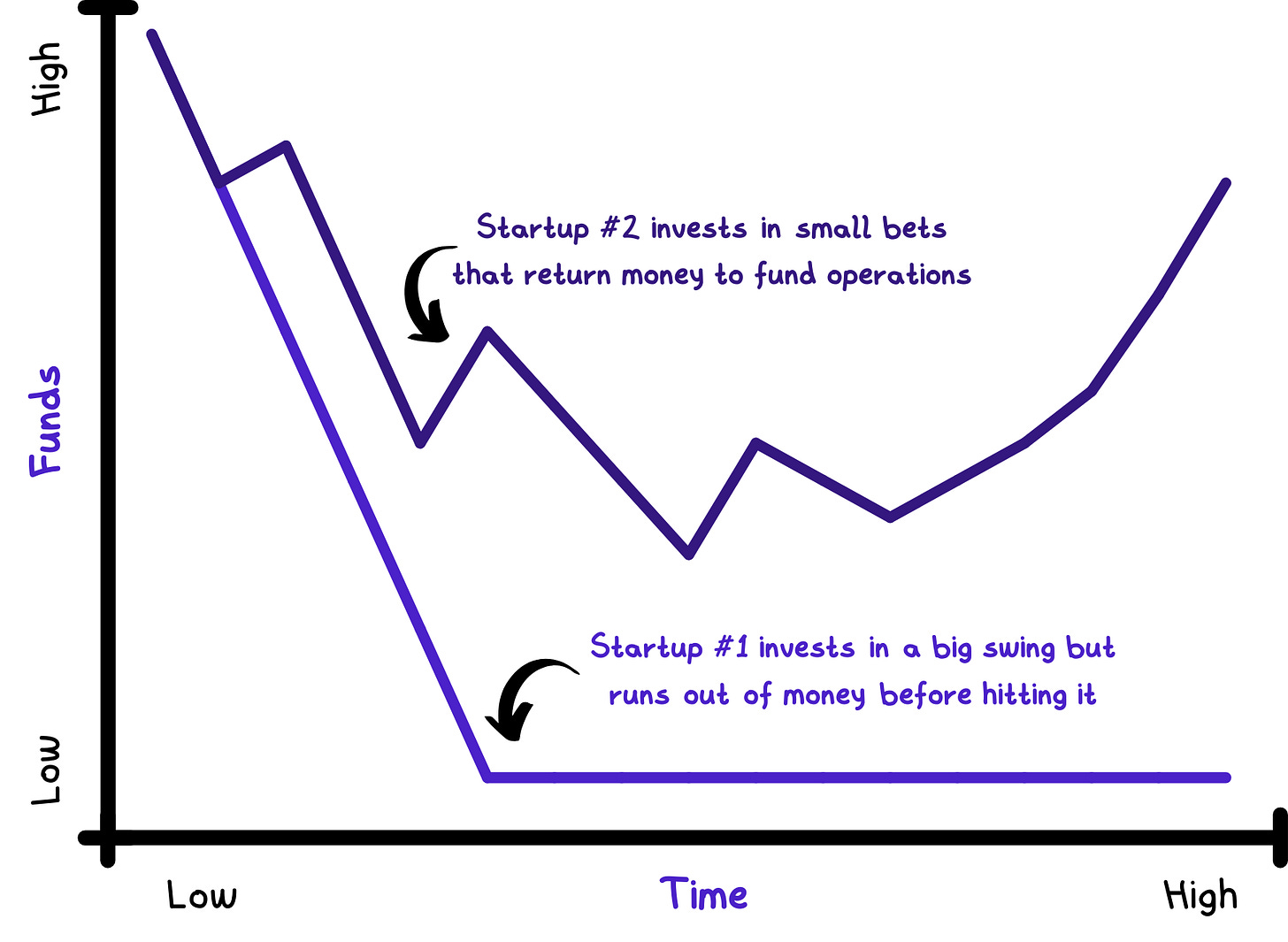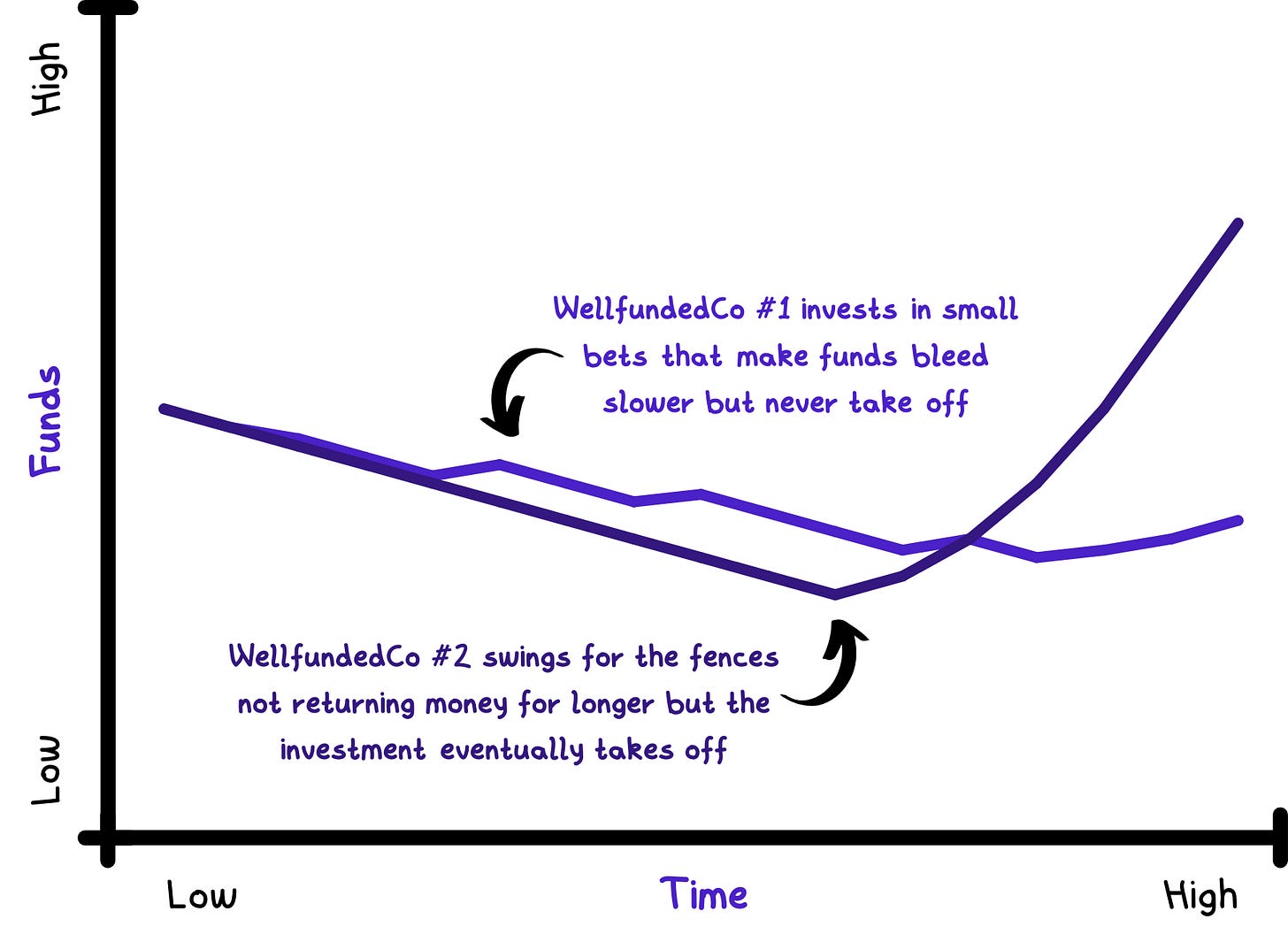Creating a product strategy involves chasing quick wins to show immediate results and investing in a long-term vision that could set you up for future success. Let's understand the upsides and downsides and determine when to use either approach.
What's the Deal with Short-Term Gain?
Short-term gain focuses on immediate results. It's about quick wins that boost numbers and show progress. Think of it as a fast, intense sprint aimed at a quick payoff. This approach can be particularly appealing when you must prove your product's value or the company's survival depends on rapid revenue generation.
Pros:
Immediate feedback and visible success boost morale and leadership buy-in.
Allows teams to react quickly to feedback from your users or the market.
Cons:
Focusing only on the short term might lead to decisions that aren't sustainable or only fight the symptoms but not the underlying issues.
Quick fixes might not address deeper customer needs, leading to dissatisfaction.
Example: A tech startup needing to show potential investors rapid growth might focus on aggressive tactics to quickly boost user numbers, even if it means higherchurn rates for now.
And what about Long-Term Vision?
The long-term vision is the marathon strategy. It’s about endurance and building a sustainable unfair advantage. This approach involves setting ambitious long-term goals that anticipate trends and positioning the product to meet those future needs.
Pros:
Aims for stability and growth that can withstand market shifts.
Focusing on long-term customer satisfaction leads to loyal users and reduces churn.
Cons:
It might take longer to see the fruits of your efforts, which can be a hard sell to stakeholders wanting quick returns.
Long-term bets might backfire if market dynamics change unexpectedly.
Example: A company might decide to invest in a vision that doesn’t have immediate market demand but is anticipated to be crucial within a few years.
When to Use Which Strategy?
Multiple factors can determine if you should primarily focus on the short or long term but your financial situation should be a primary indicator of what your strategy should build on. If you struggle to make payroll in 3 months, you should probably search for ways (if raising is not the only option you want to have) to make money in the short term, if your company is going to exist for decades you should build for what’s to come in 10 years as well not just 3 months down the line.
Opt for Short-Term Gains When:
You're in a highly competitive market where speed is critical.
Your company needs immediate results to survive or attract funding.
Incremental improvements can lead to revenue boosts. (Mature product)
Lean Towards Long-Term Vision When:
Your market position is secure, and you can afford to invest in future growth.
You're in a disrupted industry where you are forced to innovate.
The product is new, and foundational work is needed to ensure future success.
Conclusion
Balancing between short-term gains and a long-term vision requires a deep understanding of your market, your product, and your willingness to take risks. The key is not to get stuck with one strategy or the other but to dynamically shift your focus as market conditions, funding needs, and customer expectations evolve.
VERSUS Series
The VERSUS series is a set of 8 newsletter articles (2 per week) that answer questions PMs ask themselves all the time. Check out the other articles below!







